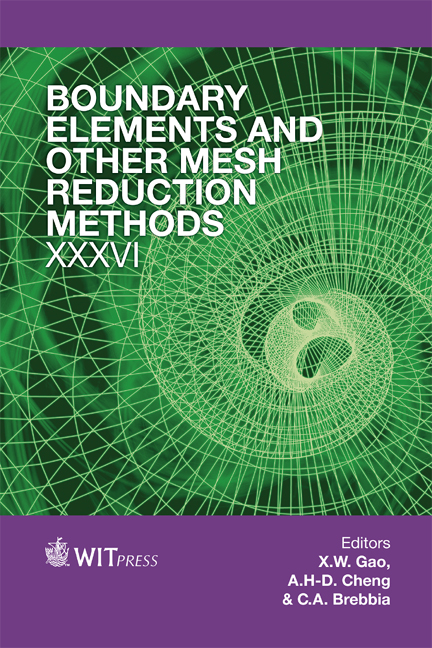Mesh Reduction Strategy: Special Element For Modelling Anisotropic Materials With Defects
Price
Free (open access)
Transaction
Volume
56
Pages
12
Page Range
61 - 72
Published
2014
Size
502 kb
Paper DOI
10.2495/BEM360061
Copyright
WIT Press
Author(s)
Changyong Cao, Aibing Yu & Qing H. Qin
Abstract
In this paper we present a hybrid finite element method (HFS-FEM) to model efficiently and accurately anisotropic materials with defects by developing special elements for elliptic hole/crack based on their associated Green’s functions. The hybrid method is formulated based on two independent assumptions: intra-element field in terms of the combination of fundamental solutions and inter-element frame fields along the element boundary. A modified functional, which is satisfying the governing equation, boundary and continuity conditions between elements, is proposed to derive the element stiffness. In this work, the foundational solutions of the anisotropic materials following Stroh formalism are employed to approximate the intra-element displacement field of general elements, while the special fundamental solutions satisfying the required boundary conditions for hole or crack are used for the special elements containing defects. Two examples are presented to assess the performance of the proposed method. Numerical results obtained for the stress concentration factor (SCF) and stress intensity factor (SIF) are extremely accurate for the investigated cases. Keywords: anisotropic elasticity, Green’s function, hybrid finite element, Stroh formalism, stress intensity factor.
Keywords
anisotropic elasticity, Green’s function, hybrid finite element, Stroh formalism, stress intensity factor





